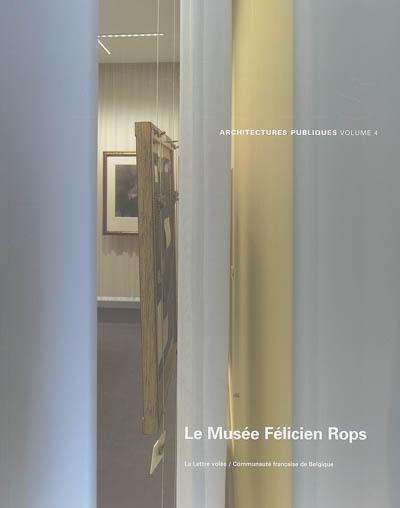
Fiche technique
Format : Broché
Nb de pages : 96 pages
Poids : 300 g
Dimensions : 18cm X 22cm
EAN : 9782873172732
Le musée Félicien Rops
architecte-scénographe Filip Roland
Quatrième de couverture
La mise en valeur de l'importance collection du peintre Félicien Rops dans le musée que lui a consacré sa ville natale de Namur témoigne de la sensibilité avec laquelle l'architecte et scénographe Filip Roland a saisi matière et lumière pour nous faire pénétrer dans l'imaginaire de l'oeuvre. Jean-Pierre Verheggen débride notre imagination par son évocation malicieuse et coquine, comme il se doit, de l'univers singulier de Rops livré au voyeurisme des visiteurs grâce à la complicité de l'«archi-scénographe». Les lignes de fuite et les trouées du regard savamment ménagées dans cet espace tout en atmosphère sont superbement rendues par le travail photographique de Reiner Lautwein. Bernadette Bonnier, la conservatrice du musée, commente cette subtile correspondance entre l'oeuvre du peintre et sa mise en espace. Dans un entretien avec Raymond Balau, Filip Roland expose les motifs et les résonances de cette intervention sur l'espace tandis que le sculpteur Anne Jones présente l'oeuvre in situ conçue pour le musée.
Après les trois premiers volumes de la collection consacrés à des projets emblématiques portés par la Communauté française de Belgique, nous avons souhaité mettre à l'honneur ce projet consistant principalement en un aménagement intérieur, initié par un autre opérateur public, en l'occurrence la Province de Namur.
The emphasis given to the extensive Félicien Rops artist's collection, housed in the museum devoted to him in his home city of Namur, bears witness to the sensitivity with which the architect and scenographer Filip Roland has used materials and light to enable us to penetrate the imaginary world of the oeuvre. Jean-Pierre Verheggen appeals to our imagination through his appropriately mischievous, even rouguish evocation of Rops' unique world, delivered up to the voyeurism of visitors with the complicity of the «archi-scenographer». The vanishing lines and peepholes skifully integrated within this atmospheric space are supremely depicted by the photographs of Reiner Lautwein. Bernadette Bonnier, the curator of the museum, comments on the subtle relationship between the artist's work and its preservation. In an interview by Raymond Balau, Filip Roland presents the reasoning and resonances of this intervention while the sculptor Anne Jones comments on her in situ work for the museum.
Following the first three volumes of this collection which cover flagship projects commissioned by the French Community of Belgium, we whished to highlight this project consisting principally of interior design, undertaken at the initiative of another public body, the Province of Namur.





